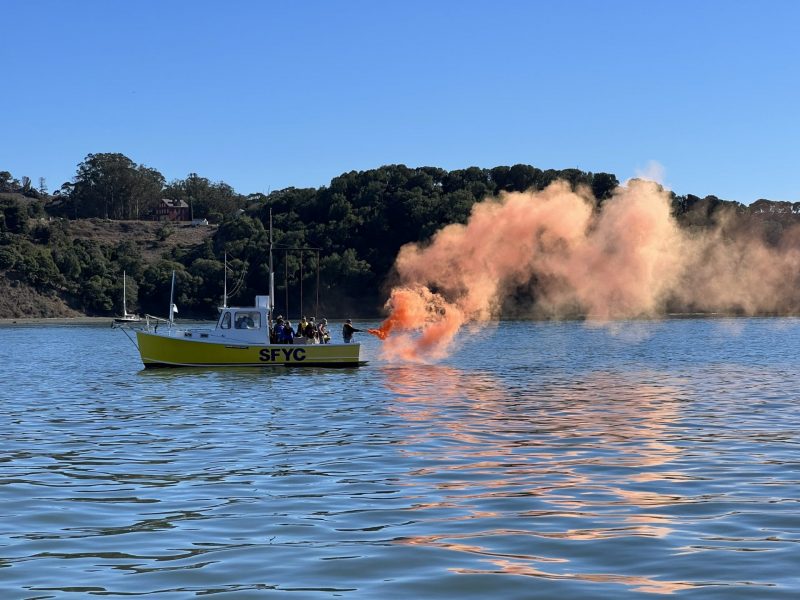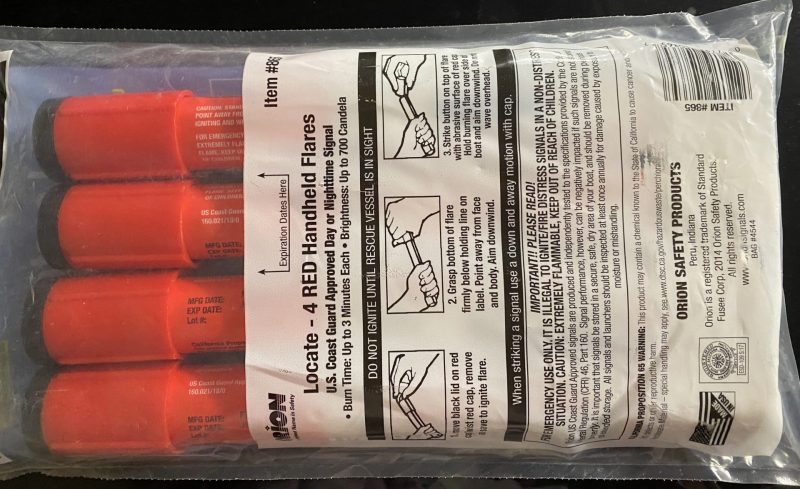
While We’re Talking About Marine Flares…
Last week we wrote about the idea of marine flare practice exercises. Eric Spross was on the water aboard his Sausalito-based Swan 431 Terral when he heard a Sécurité call on Channel 16, advising that the San Francisco Yacht Club would be conducting flare exercises from their boat Victory in Raccoon Strait.

Eric posed some questions about how one goes about organizing and preparing for such an exercise. We put the question to the Coast Guard and were rewarded with a guide on how to proceed. (See our story in last week’s ‘Lectronic Latitude.) The story, as it happens, coincided with some emails we received regarding flare disposal, an issue that has plagued mariners for quite some time.
Bay Area sailor Matthew Schuessler has spent a good amount of time and energy seeking out a practical solution to expired flares — the product we are all required to carry aboard, but that comes with no procedure for safe and proper disposal, apart from irregular and infrequent, localized disposal events. We were copied on a chain of emails that began when Matthew wrote to several agencies, addressing the issue of flare disposal in Sonoma County. Matthew’s initial email was in response to his failed attempt to deal with the issue over the phone. Part of his email read, “I have learned that there is literally nowhere to dispose of expired marine flares in our County. Using the ZeroWasteSonoma site (first link below under References), I contacted Sonoma Sheriff’s Dept. first, and learned they formerly did accept them, but no longer do. They directed me to Sonoma County Fire, who directed me to USCG, who directed me to Sonoma HHW (Household Hazardous Waste), who confirmed — as indicated on the ZWS site — that they do *not* accept marine flares.”
Now what? The first response to his email amounted to, “Sorry; we know there’s a problem, but we can’t help you.” This was, however, followed up with a link to a very nice PDF titled “Marine Expired Flares: A Bay Area Pilot Project to Help Boaters.” Unfortunately, the nicely illustrated, colorful document, while detailing the what and why of flares, failed to provide any information on their disposal.

Next in the chain was a reply from Vivian Matuk, Environmental Boating Program Manager, California State Parks and California Coastal Commission. Matuk didn’t give a solution as such, but her response did shed some more light on the problem behind the problem. “Due to the hazardous nature of the marine flares (low explosives) their collection and treatment is pretty expensive. CA has to ship them (of course ground transportation) to only three states (LA, UT [incinerators] and MO [open burning]) that have permitted facilities to treat the flares. As you can imagine this is cost prohibitive for municipalities. The cost to treat a flare can range between $7 to $50 per flare,” she wrote.
Matuk explained that the counties “have to apply to get the grant from CalRecycle to properly and legally plan and conduct the collection event with ALL the proper federal and state permits.” To facilitate this, California has a grant program to assist counties with the costs involved. From time to time we are notified of upcoming flare-disposal events in various counties, the most recent being held earlier this month in Richmond.
One solution could be to have a “permitted” disposal facility nearby. This possibility was mentioned in a response Matthew received from Zero Waste Sonoma’s Household Hazardous Waste (HHW) manager, Courtney Scott. Scott wrote that while they don’t currently have what she called a “magazine for the collection of explosive material,” they are in the process of looking for new property to build a second HHW facility in the north/central area of the county at which they would like to install a magazine, “if we can find the right property with the right zoning.” Though even if they were able to secure such a property today, it would still be another three to five years before the facility was operable.
We understand that none of the information above solves our immediate and frequent issues regarding flare disposal. But we do feel a little appeased by learning that the issue is not due to neglect or lack of interest, but because of the nature of the product we’re dealing with, and the limited facilities and the high cost of their disposal. In our understanding flare-disposal events have always been free, thereby relieving mariners of the added costs of offloading expired flares. We appreciate this and thank the counties and relevant agencies for taking on these costs. We also thank Matthew Schuessler for his persistence in looking for answers. Again, it doesn’t help us today, but it does help to know that people are looking for better solutions. Of course, now that there are alternatives such as the LED electronic visual distress signal devices, perhaps flare disposal will one day become a non-issue. In the meantime, we will continue to share any new information as it comes to light.
